|
MaximumSecurityCity .org // we are prisoners of our own need for security // Timdeboer .org // I would like to thank the Bakema Foundation, Nai, Hans Ibelings, Sebastiaan, Nanko, Fransisco, Cornelieke and many others |
||||||||||||||||||||
| tttt |
Research |
ttttt | tttt | tttt | Theoretical solutions for terrorism threats
The solutions shown here are a selection of ways to deal with terrorism threats in an urban enviroment. They are grounded on lessons from warfare and architectural theory. These cannot provide complete security however. Attackers will always look for the weakest point in the defenses of a specific target or in society itself. And there is always a weak point, it can be a nursery, a train station, a Mc Donalds, or a open door, a leaked entrance code, a corrupt security guard. The current reaction consists partly of fortification (and relocation) of probable targets. But there is also a bigger change going on: A surveillance blanket is being rolled out. Not only you are subject to observation in public space but also all your movements and private communications are being watched. Justification is given that this will make possible the capture of terrorists before they strike. Unfortunatly this means that everyone is subject to observation. This influences public life, and the use of public space by citizens. |
ttttt | 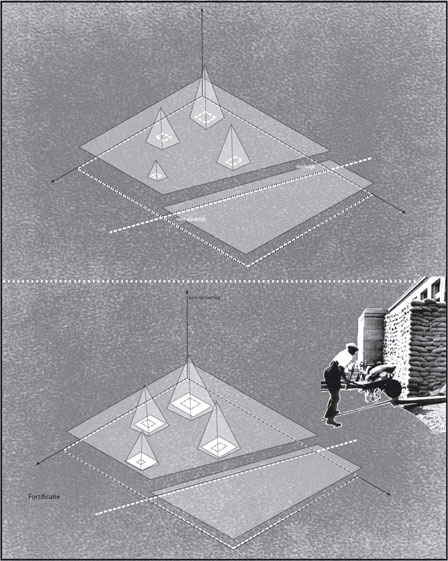 |
ttttt | 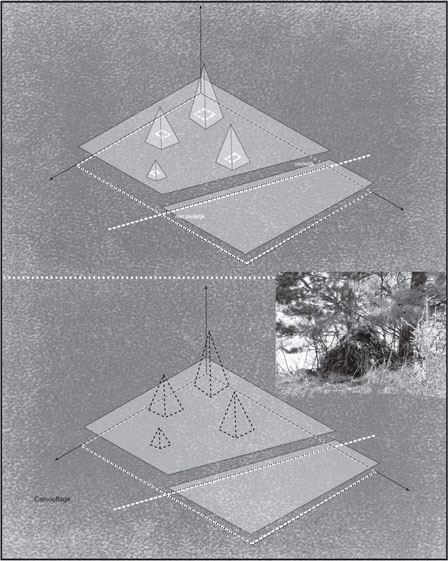 |
ttttt | 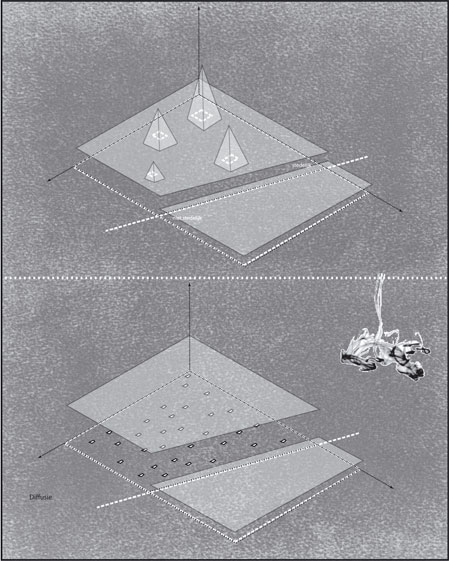 |
ttttt | 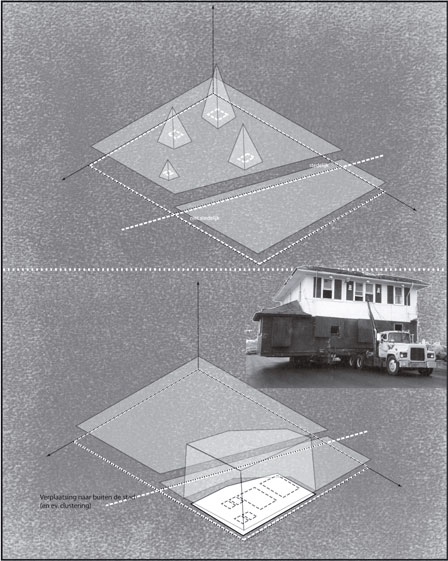 |
ttttt | 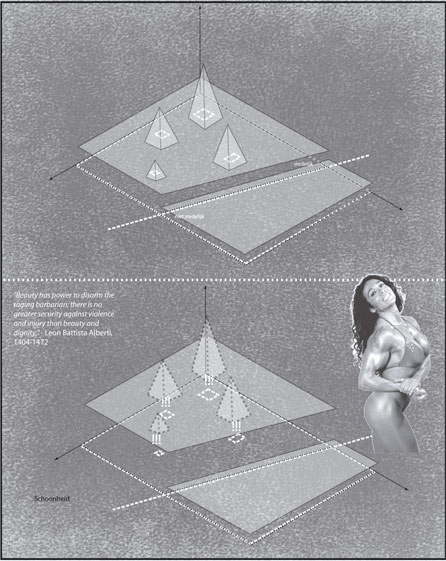 |
ttttt | ttttttttttttttttttttttttt | ||||
| Fortification | Camouflage | Diffusion | Relocation | Beauty | |||||||||||||||||
| The most common way to deal with the threat of terrorism is target hardening. Its a very simple method, but has one major disadvantage; it eats up a lot of space. This space is taken away from city uses. Target hardening is also a very visual thing | Camouflage is an effective way to hide programs. However discovery makes relocation neccessary. 'Hiding' an embassy inside a bigger officebuilding can be camouflage enough. Additional security measures are always needed, because camouflage is not in itself a defense. | Breaking up larger programs threated by terrorism can make an attack less likely. The results (from a attack) will not be worth the risks needed to pull it off. Economicly this is a very expensive solution, especially when breaking up program that needs to function together. | Relocation and clustering can be a solution for programs suffering a longer running threat and that dont need to be located inside the city. However some programs cannot be relocated, such as public transport hubs and important goverment buildings. | "Beauty has the power to disarm the raging barbarian, there is no greater security against violence and injury than beauty and dignity" - Leon Battista Alberti (1404-1472). | |||||||||||||||||
| uuuuuuuuuuuuuuuuu | |||||||||||||||||||||
2007 |
|||||||||||||||||||||